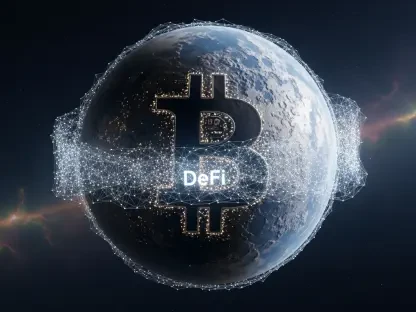Setting the Stage for a Financial Data Revolution
The Consumer Financial Protection Bureau (CFPB) stands at the epicenter of a transformative battle over open banking in the United States, with a staggering 14,000 public comments submitted during a recent 60-day feedback period. This unprecedented volume of input, representing banks, fintech startups, retailers, tech giants, and even cryptocurrency advocates, signals a critical juncture for how personal financial data is accessed and shared. As stakeholders clash over data fees, compliance timelines, and regulatory scope under Section 1033 of the 2010 Dodd-Frank Act, the implications for market competition and consumer empowerment are profound. This analysis delves into current trends shaping the open banking landscape, evaluates the forces driving contention, and projects potential outcomes that could redefine the financial services sector.
Dissecting Market Trends in Open Banking
Polarized Forces: Banks and Fintechs at Odds Over Data Access
A defining trend in the open banking market is the sharp divide between traditional banks and fintech innovators regarding data access fees. Major banking institutions, supported by groups like the American Bankers Association (ABA), argue for the right to charge fintechs and data aggregators for accessing consumer data. They contend that fees compensate for infrastructure investments and promote data security by discouraging excessive collection. On the other hand, fintech organizations, represented by entities such as the Financial Technology Association (FTA), view these fees as barriers to competition that could ultimately burden consumers with hidden costs. This friction highlights a broader market tension between maintaining established financial systems and nurturing disruptive innovation, with each side positioning itself as the guardian of consumer interests.
Expanding Stakeholder Influence: Beyond Traditional Finance
The open banking debate has transcended the confines of finance, drawing a diverse array of market players into the conversation. Retailers, through associations like the Retail Industry Leaders Association (RILA), express concern that data access fees could replicate the high interchange fees seen in card payments, affecting major players like Costco and Walmart. Meanwhile, cryptocurrency proponents emphasize the potential for open banking to bolster digital asset innovation, warning against restrictive policies that might drive talent abroad. Payment processors also underscore the rule’s impact on emerging technologies such as AI-driven commerce, pointing to a market trend where financial data policies intersect with broader economic and technological shifts. This widening stakeholder base illustrates the far-reaching implications of regulatory decisions in this space.
Regulatory and Compliance Challenges Shaping Market Readiness
Compliance timelines and regulatory definitions further complicate the open banking market landscape. The current framework mandates a staggered rollout, with the largest banks expected to comply by mid-2026 and smaller institutions following through 2030. Banks advocate for a delay in these deadlines, citing unresolved legal challenges and regulatory ambiguities, while fintechs push for adherence to maintain momentum. Additionally, debates over exemptions for smaller institutions—those with assets under $850 million—and the precise definition of consumer representatives add layers of uncertainty. Tech giants have even called for exclusions, such as not classifying digital wallets as data providers. These issues reflect a market grappling with the practicalities of implementing a transformative policy amid divergent interests.
Forecasting the Future of Open Banking Markets
Technological Innovation as a Market Driver
Looking ahead, technological advancements are poised to be a significant driver in the open banking market. Innovations like AI-driven commerce and stablecoins signal potential for new service delivery models that leverage financial data in unprecedented ways. Industry leaders note that supportive policies could accelerate the adoption of these technologies, positioning the U.S. as a leader in financial innovation. However, restrictive regulations or excessive fees risk stifling this growth, potentially ceding ground to international competitors. The trajectory of these technologies will likely hinge on how the CFPB balances innovation with security concerns in its final rule.
Political and Regulatory Uncertainties Impacting Market Stability
Another critical factor shaping market projections is the uncertainty surrounding the CFPB’s future. Recent statements from acting leadership hinting at downsizing or even closing the agency introduce a wildcard into the rulemaking process. Such developments could delay or derail the open banking rule revision, affecting market confidence and investment in data-sharing infrastructure. Despite this, many industry voices assert that the push for open banking will endure, driven by consumer demand for choice and competition. Market participants must prepare for multiple scenarios, from full implementation to significant policy pivots influenced by political shifts.
Competitive Dynamics and Consumer Impact in Focus
The competitive dynamics between banks and fintechs are expected to intensify as open banking policies take shape. If data access fees are permitted, larger banks could solidify their market dominance, potentially marginalizing smaller fintech players and limiting consumer options. Conversely, a fee-free or low-barrier framework could spur a wave of new entrants, enhancing market competition but raising concerns about data security. Consumer behavior will play a pivotal role in this evolution, as demand for seamless, innovative financial services could pressure regulators to prioritize accessibility over caution. The balance struck in the final rule will likely determine whether the market tilts toward consolidation or diversification.
Reflecting on Market Insights and Strategic Pathways
Looking back, the deluge of 14,000 comments submitted to the CFPB underscored a deeply fragmented yet dynamic market landscape for open banking. The stark divisions over data access fees, the diverse stakeholder input spanning multiple industries, and the looming uncertainties around compliance and agency stability painted a complex picture of competing priorities. These findings highlighted the critical stakes involved, as decisions made in this arena promised to reshape financial services for years to come.
Moving forward, stakeholders need to adopt proactive strategies to navigate this evolving market. Fintechs and smaller banks are advised to invest in scalable data-sharing technologies while advocating for policies that minimize barriers to entry. Larger institutions must focus on balancing revenue goals with consumer trust, ensuring that fee structures do not alienate users or regulators. For policymakers, the challenge lies in crafting a rule that fosters innovation without compromising security, potentially through tiered compliance frameworks or pilot programs to test outcomes. Consumers, meanwhile, are encouraged to stay informed about their data rights, leveraging emerging tools to maximize the benefits of open banking. These actionable steps offer a roadmap for all parties to engage constructively in shaping a competitive, consumer-centric financial future.









